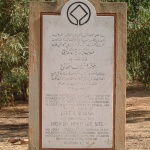Leptis Magna
Leptis Magna has deservedly earned a reputation of having the most complete and impressive Roman ruins in the entire North Africa. Leptis Magna was originally a Berber settlement, where after the Phoencians made it into a trading point. From the 6th century BC Leptis Magna was probably subdued by Carthage. It became part of the Roman empire in 111 BC.
While the setting of Leptis Magna cannot compete with what is found in eastern Libya, the harbour area is still very nice, together with Wadi Labna, even if it is almost filled with sand now. It is much because of the sand that Leptis Magna is so well preserved, for 800 years the site was entirely protected by it.
At the most Leptis Magna can have had as much as 80,000 inhabitants, and its splendor profited from the love the emperor Septimus Severus (193-211) felt for his native town. Much of the best at the present site dates back to this period. The town had a steady base of income from slave trade, gold, ivory, metals, plus agriculture which was richer in those days.
The number of great monuments of Leptis Magna makes it a bit difficult to point out highlights. But the theatre is clearly one, and it has a splendid view from its upper tiers. Its diametre is 70 metres. Large parts of the structure has kept on to its ornamentation, and in the theatre there are many statues left.
The Hadrianic Baths are still impressive, and one of the pools, measuring 28 times 15 metre, remains intact. This bath house was one of the largest that ever was built outside Rome itself.
The circus, near a kilometre away from the main site, remains still only partly excavated. With its size of 450 times 100 metres it was one of the very largest in the entire Roman world. And it is the only of its kind in Libya today. Nobody should miss out on the important museum of Leptis Magna, now open.
Leptis Magna is added to the UNESCO World Heritage List, as one of 5 places in Libya.
Monuments: Palaestra (sport ground), Head of Medusa, Hadrianic Baths, Latrines, Theather, Cistern, Circus, severan Basilica, Painting of the hunting baths, The Market, Severan Arch, Pollux son of Zeus.









WHO ARE WE
OTHER SERVICES
LIBYA TOURS
CONTACT